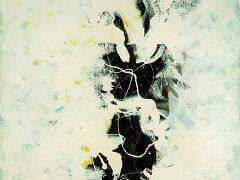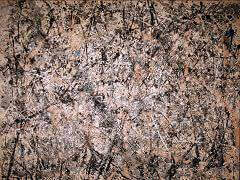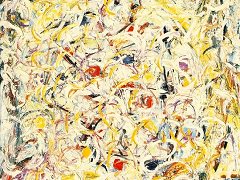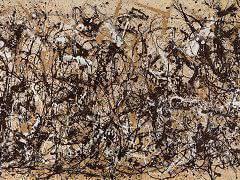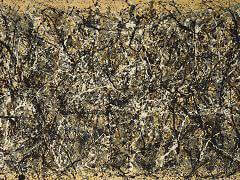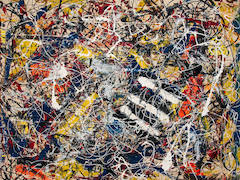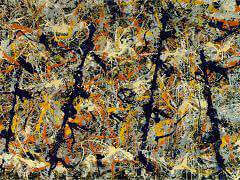Croaking Movement, 1946 by Jackson Pollock
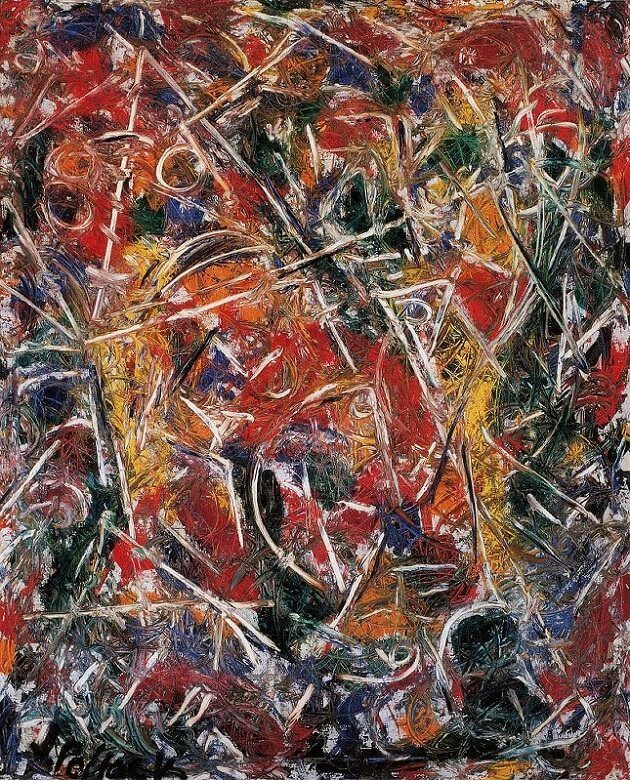
Pollock had moved to a house on Long Island in 1945, and early the next summer began using one of the bedrooms as a studio. Later in 1946 he arranged with Peggy Guggenheim to have a show
at her Art of This Century gallery, to open in January of 1947. Croaking Movement is one of the seven very different, but equally innovative freshly finished works that were exhibited. These paintings, all created during
the latter half of 1946, were grouped together under designation Sounds in the Grass.
In Sounds in the Grass, Pollock no longer applies paint with a brush, but squeezes pigment onto the canvas directly from the tube, pushing and smearing it with blunt instruments to create a thick, textured crust. One's
gaze is carried along broad swaths of color that swoop, careen, double back, rise, and fall rhythmically over the entire canvas. Eyes in the Heat, another key work of the series, also exhibit
more gyrating and bulkier strokes which swirl sensuously in a continuum from edge to edge, generating an actively charged and explosive emotional intensity previously unknown in American art.
Jackson Pollock was Thomas Hart Benton's most ardent follower in the 1930s and his early work bears a strong similarity to that of his teacher in terms of style and subject matter. Benton had discouraged an emphasis in the
expressiveness of color among his students, based on his belief in the superiority of line in constituing a great work of art. As a result, fellow Benton classmates recall that Pollock was literally afraid of color, and
the muddiness of his pictures throughout the thirties to the continuation of this inhibition. Pollock's color did not begin to improve until the early forties under the influence of Picasso
and expecially Miro



